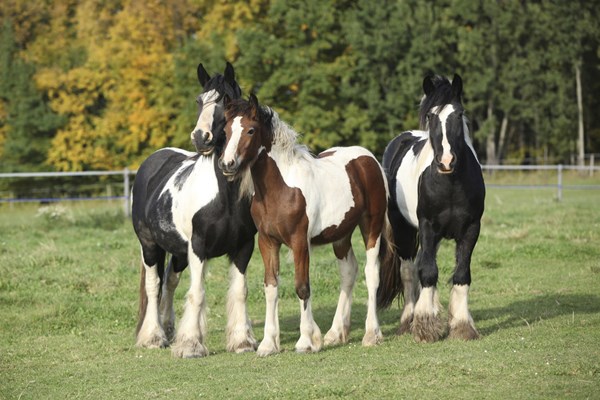 Credit: Thinkstock
Credit: ThinkstockWeeds are often a problem in horse pastures, especially in areas that are overgrazed or overused (trampled).When desirable forage plants are compromised, weeds take over.Horse owners should become familiar with the various weeds in their geographic area that can be health hazards for horses, and eradicate them from horse pastures, if possible.
Dr. Anthony Knight, of Colorado State University, said some of the toxic weeds in the West include various locoweeds, Russian knapweed (similar to yellow star thistle in toxicity), water hemlock (growing along streams and wet areas), houndstongue (an introduced weed that spreads rapidly in pastures or hayfields–and remains toxic even when dried–causing photosensitization), some of the senecios or groundsels (which also cause liver disease and photosensitization) and narrow leafed milkweeds (not to be confused with broadleafed types).There are different toxic weeds in different areas of the country.
If you have any water hemlock in a pasture, even one or two plants, dig them out and get rid of them, since it takes very little (1 to 2 ounces) of the root or new leaves in the spring to fatally poison an animal.“Poison hemlock is not as deadly; animals have to eat a lot more of this plant to have adverse effects,” he said. “Usually early spring, as it’s emerging, is the only time horses might eat it.The carrot-like root is also very poisonous.Once it’s mature and flowering, it is less toxic.”
If you find a plant in your pasture you don’t recognize, have your county weed specialist identify it, especially if your horses are eating it, or if there’s a lot of it.“Horse owners often become concerned when they find a strange plant, but rarely is a single plant going to cause poisoning (except water hemlock).Poisoning is usually dose related,” said Knight.
Other weeds such as thistles, burdock, cocklebur, foxtail, cheat grass, etc. are not toxic, but reduce the value of a pasture.Some of them cause problems for horses (mouth injuries from eating sharp seedheads, or burrs stuck in the mane and tail).
Before you decide to spray weeds, check your county regulations regarding which herbicides you can use, and how to use them.“With difficult plants like Russian knapweed, you almost have to use Roundup,to kill all the vegetation, then reseed the pasture with appropriate grass species for your area.It doesn’t do much good to kill knapweed unless you can reseed and get a vigorous pasture grass growing to provide competition for weeds and suppress any recurrence of the knapweed,” explaineds Knight.
If seeds are blown or carried in, knapweed will establish in areas that don’t already have thriving grass cover.“Knapweed also secretes chemicals into the soil that kill off other plants, and it’s soon a monoculture of knapweed.Nothing grows under it.”
Some weeds can be biologically controlled by using a specific species of insect that feeds on the blooms so the plant cannot go to seed.“There are only a few biological controls that have been well tested in North America.One is a beetle that can effectively control leafy spurge, and you can usually get those from the state insectory through your county extension office.There are some other things being tried, such as a weevil to control houndstongue, and a knapweed fly,” he said.
Sheep and goats are sometimes utilized to graze weeds.“They are very good at keeping plants from going to seed, especially if large numbers of animals are used for a short time to quickly eat the weeds,” he said. “But you have to keep after it each year because the grazing won’t kill the plants.They will come back again.”Diligently grazing or mowing the weed patches will eventually allow grasses to become reestablished.
Clipping and mowing can be effective in controlling some types of weeds and thistles or even spotted knapweed, because they largely spread by seeds.If you can stop them from seeding, they tend to die out after a few years because they are a biennial rather than a perennial. Anada thistle, however, will still spread even if you mow it to prevent a seed crop, because it mainly spreads via its root system.“Where Canada thistle is a problem, it usually requires the use of a selective herbicide to kill it, and then reseed with a good forage plant,” said Knight. “There are several good broadleaf herbicides that will work for Canada thistle.Check with your county weed regulations to make sure you use one that is approved.”



